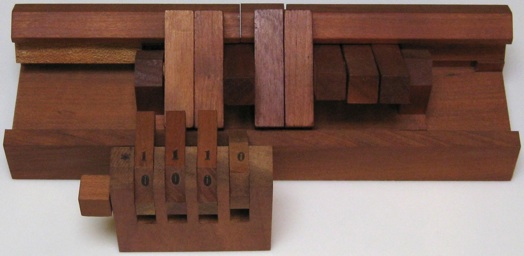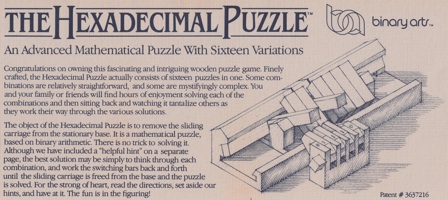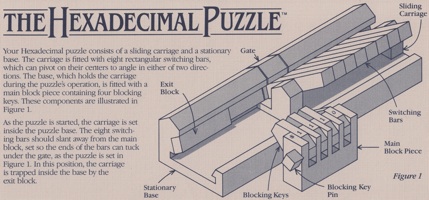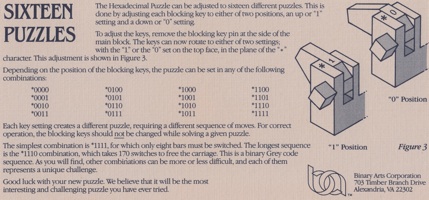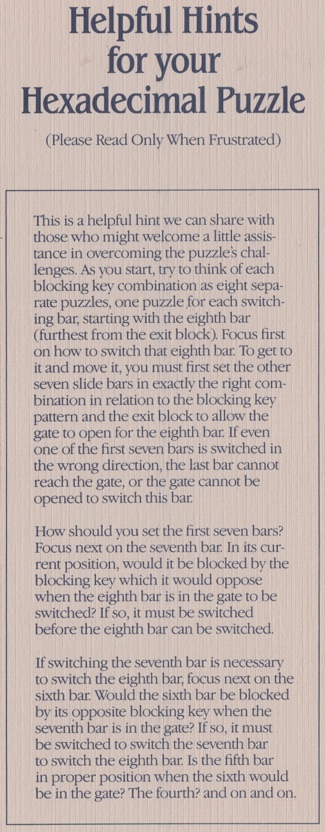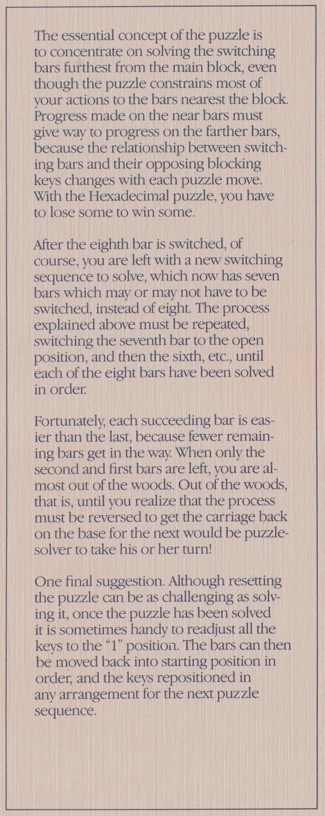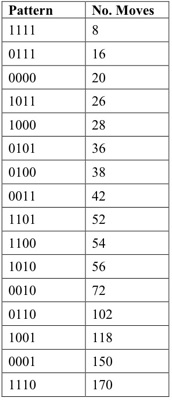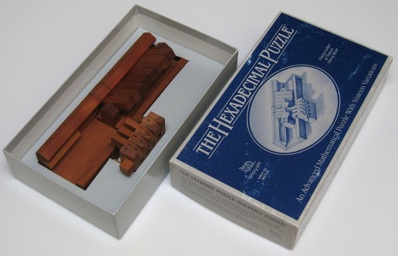
Patented by W. Keister 1972, made by Binary Arts.
(Cherry, 8.75 inches, in a 6.2 by 10.75 by 2.2 inch cardboard box)
There are eight bars that can either be up or down; and four fingers that can be either up (one) or down (zero). In the photo below, the leftmost two bars are up, the third bar from the left is down, the fourth and fifth bars from the left are up, the rightmost three bars are down, the left three fingers are up (three ones), and the rightmost finger is down (a zero). The assembly that holds the bars cannot slide out to the right and can only slide out to the left if all the bars are up. The finger assembly can be pushed in (it is spring loaded) to cause a center portion of the back edge to go back, allowing the bar that is lined up with the right edge of the finger assembly to move up or down; the difficulty is that the finger assembly can only push in when each 1-finger is aligned with a down bar and each 0-finger is aligned with a down bar (or the finger is to the left of the bars); in the photo below, it can be pushed in. The fingers can be set to any of the sixteen possible patterns by pulling out the peg that runs through them and rotating each as desired. The corresponding sixteen puzzles all have the goal of starting with all bars down, and sliding the finger assembly out to the left. Setting 1111 allows the bars to be moved up one at a tome and the bar assembly easily slid out. Setting 1110 is the hardest setting, which gives a puzzle equivalent to the Chinese Rings, and requires 170 moves.
